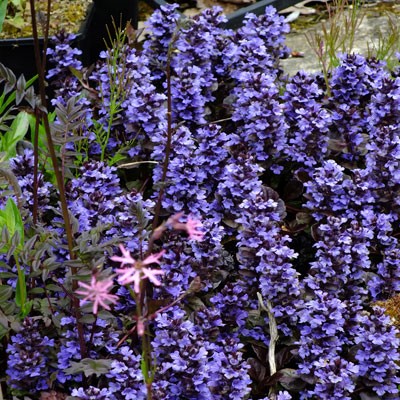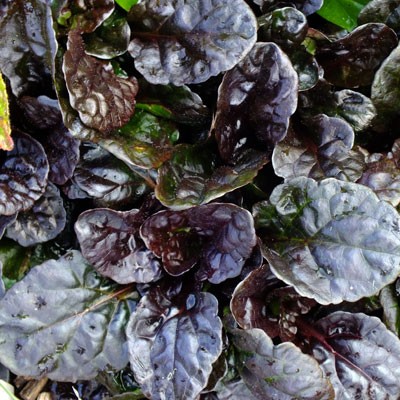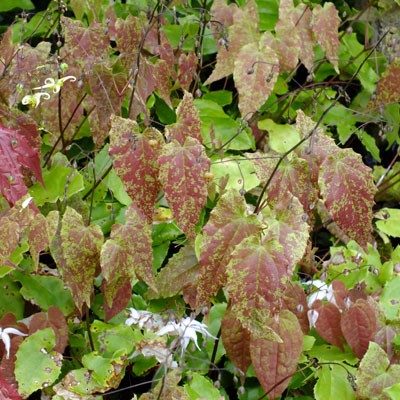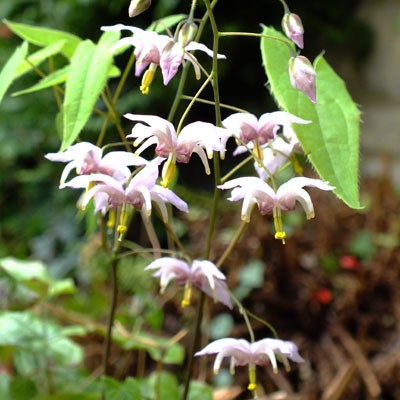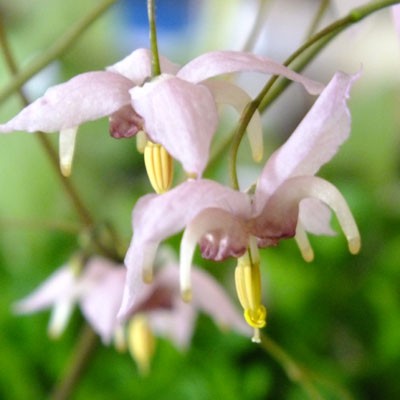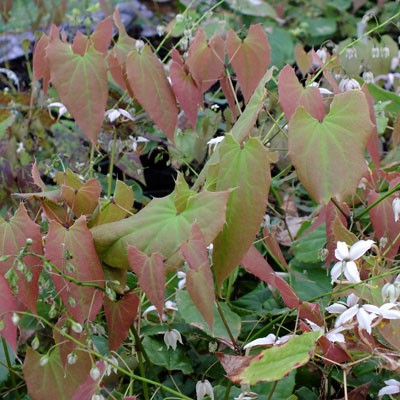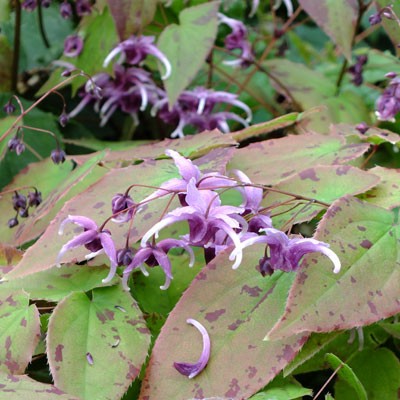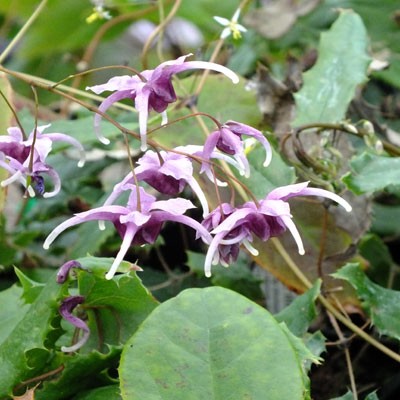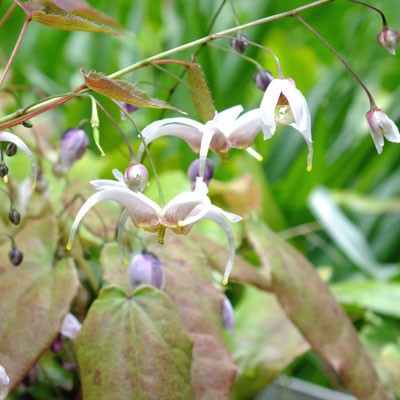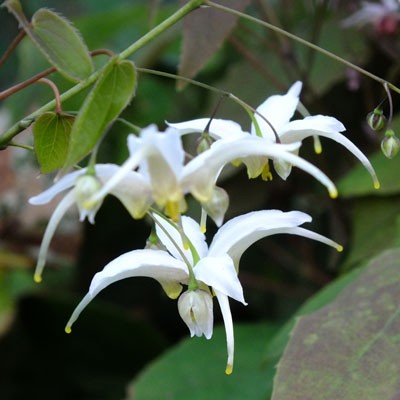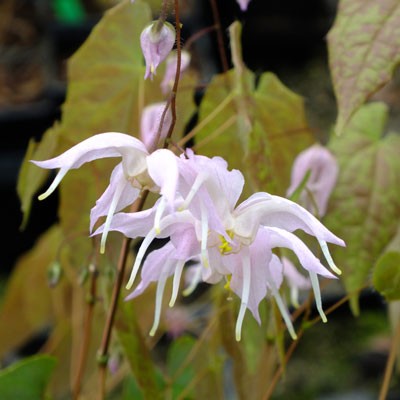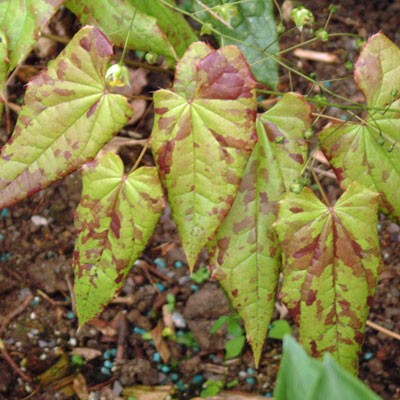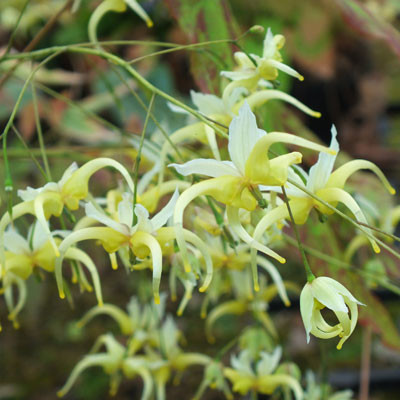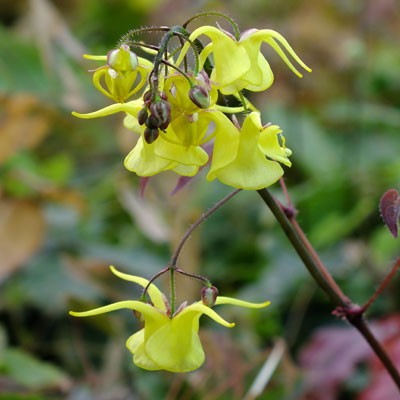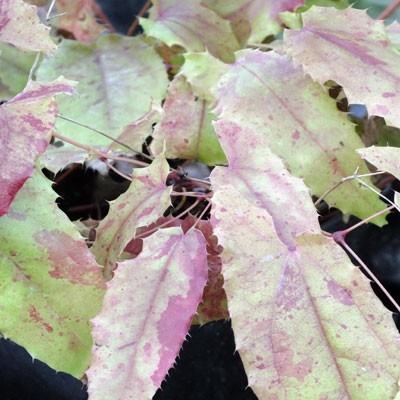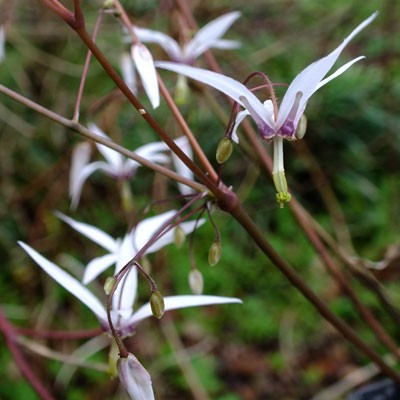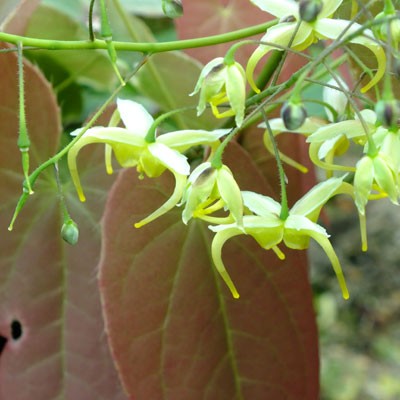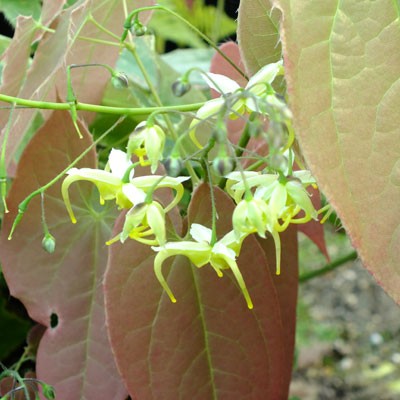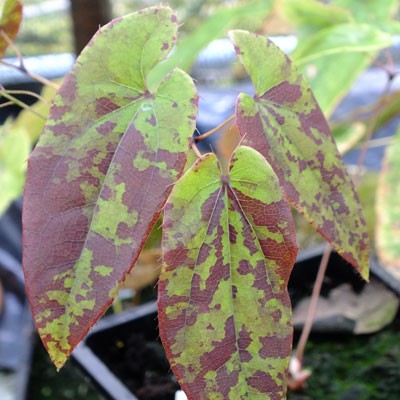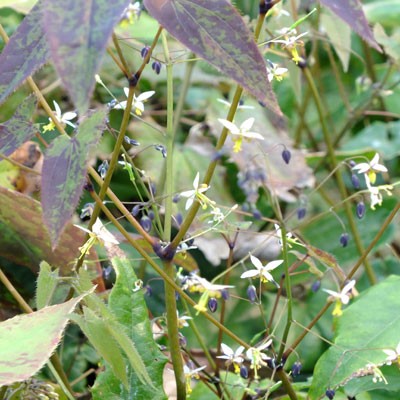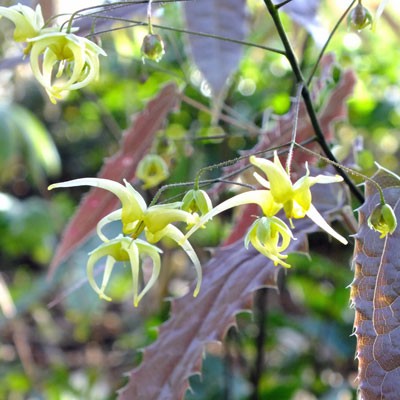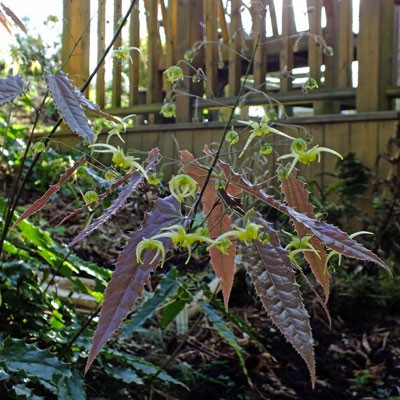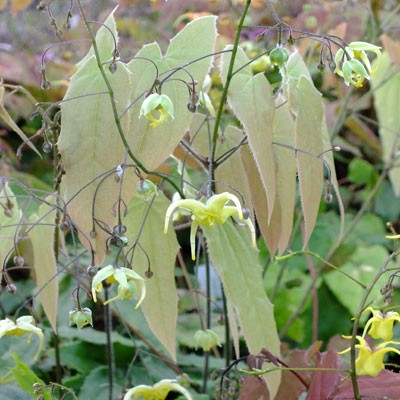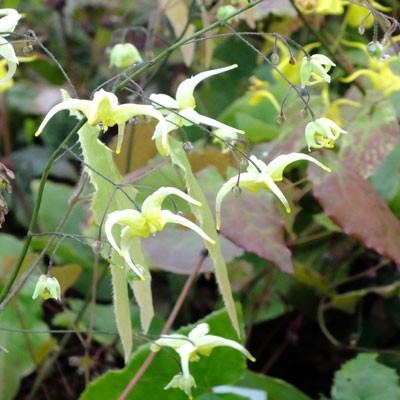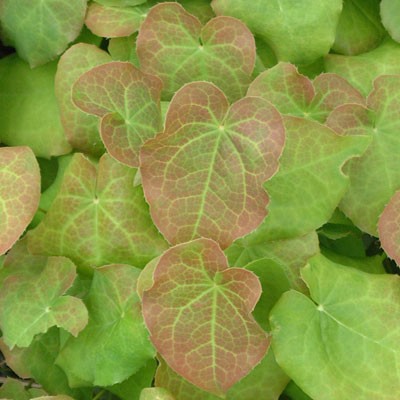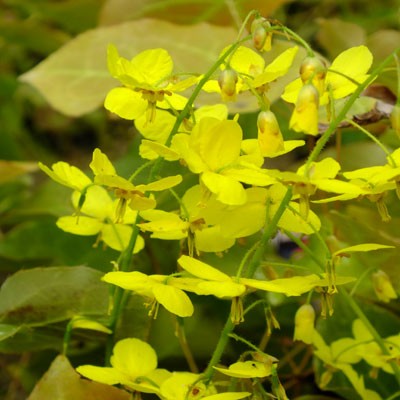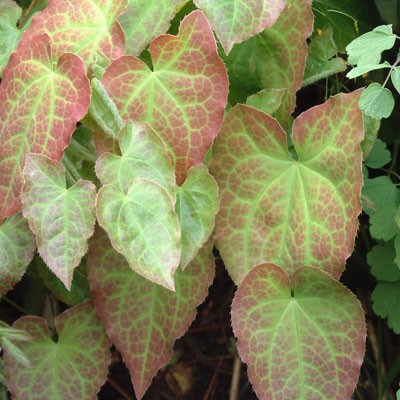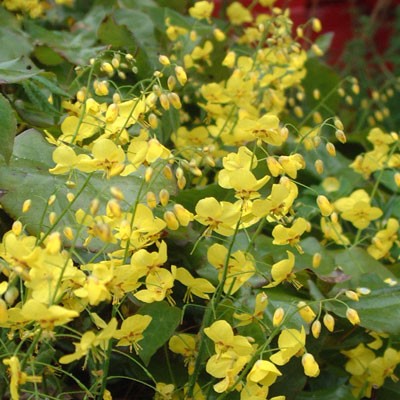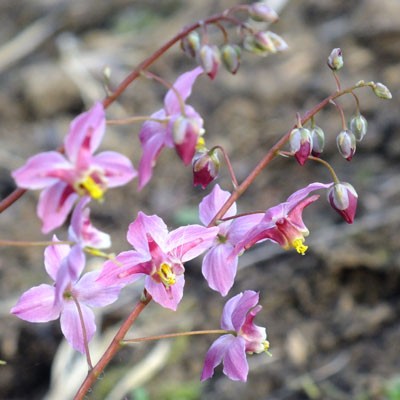-
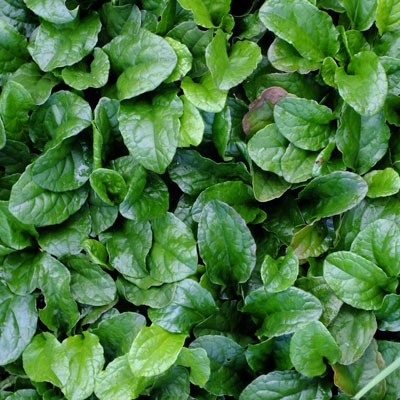

Potsize - 1L
Bugle. Lovely ground cover for a shady spot where the green leaves will make a dense carpet above which will stand dense, short spikes of pink flowers in the spring. Discount of 25p per plant for quantities of 3 or overLinks
Botanical Style Photographs
-
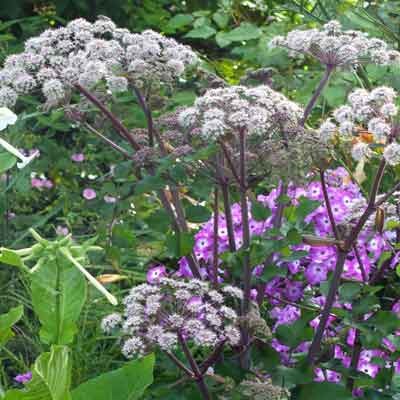
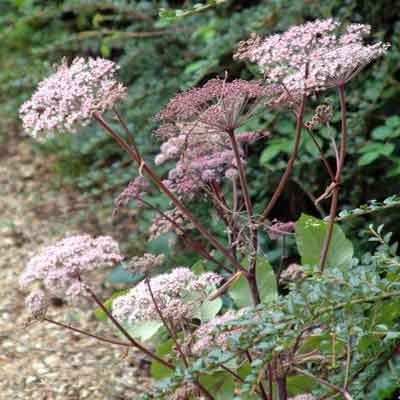

Bee Friendly
Potsize - 1L
Angelica sylvestris 'Purpurea' . Starting remarkably early in the year this plant pushes up fascinating glossy purple foliage, soon becoming an imposing architectural feature topped with a dense spherical head of pink flowers. In appearance not dissimilar to a more sturdy cow parsley, but with less air and more presence. Will seed about mildly. Likes a good moist spot. Discount of 25p per plant for quantities of 3 or overLinks
Umbellifers
-
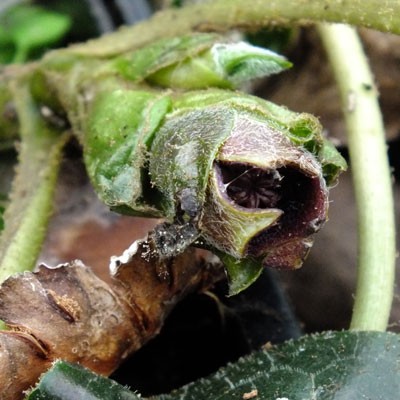
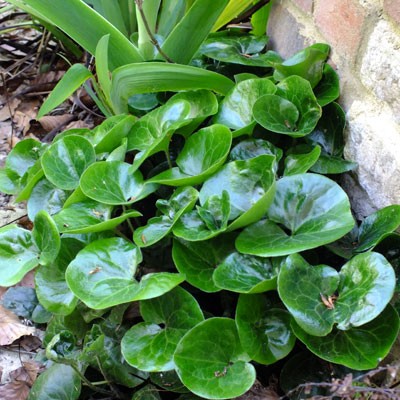
Potsize - 1L
Asarum europaeum - Asarabacca. Shining evergreen foliage interest for moist shade where creeping rooting stems form loose ground cover. Curious fly pollinated flowers appear in spring. Asarum europaeum - Asarabacca - may not be the most showy but everything about it cries out class. The leaves are a lovely glossy deep green and evenly rounded, the perfect counterpart to filigree plants like Maidenhair ferns. It will grow in dry shaded locations where it will make good groundcover and if you care to lower your nose to it you'll catch a rich spicy aroma. It is certainly one of my favourites. CAUTION. All parts of this plant are poisonous. -
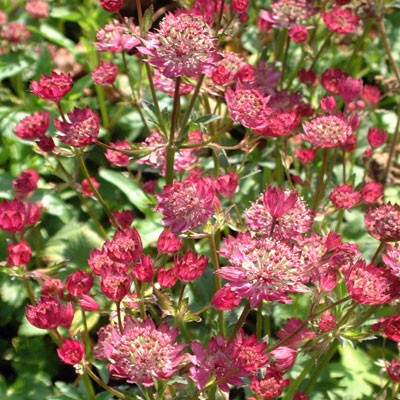
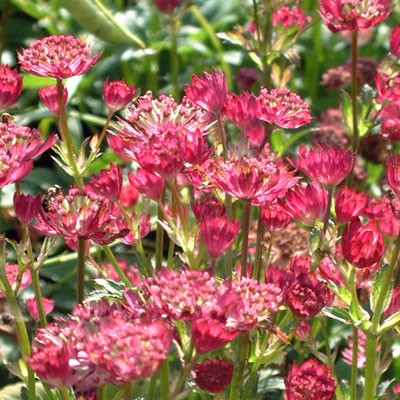
Potsize - 1L
A recently selected large flowered dark red masterwort. Tight clusters of maroon flowers are surrounded by beautiful ray florets. An interesting & beautiful plant happy in sun or part shade with some drainageLinks
Astrantia Compared
Astrantia in the Garden
Botanical Style Photographs
-
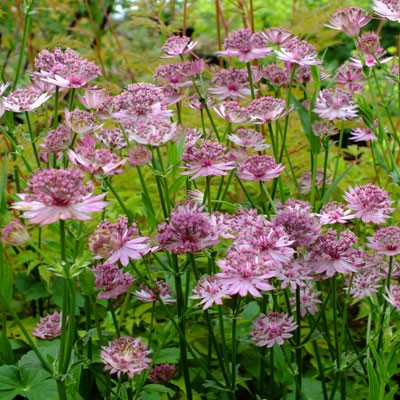
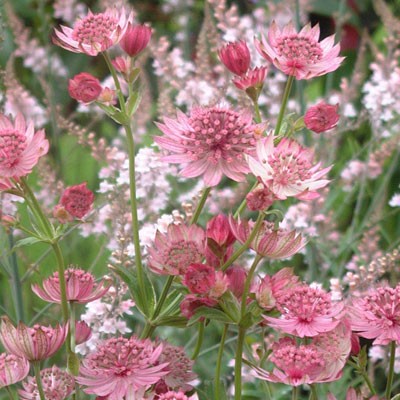
Potsize - 1L
Astrantia 'Roma'. Lovely mid pink cultivar of good constitution. The bracts form a shallow starry cup that is a shade lighter than the tight central pincushion of true flowers. 60cm. An interesting & beautiful plant Happy in sun or part shade with some drainageLinks
Astrantia Compared
Astrantia in the Garden
Botanical Style Photographs
-

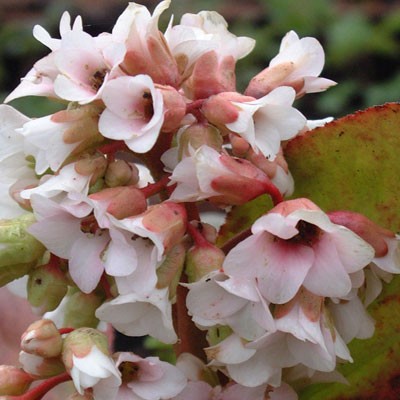
Potsize - 1L
Bergenia 'Bressingham White'. Praised for its robust stature and the freedom with which it produces both flower and leaf. Slowly spreading to form a good clump of large leaves with fine trusses of pure white flowers from March until May. Raised by Blooms and happy in both sun and part shade.Discount of 25p per plant for quantities of 3 or overLinks
Bergenia Compared
Botanical Style Photographs
-

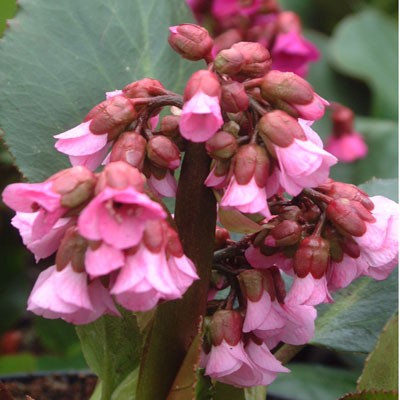
Potsize - 1L
Bergenia 'Eric Smith'. A handsome variety originally bred by Eric Smith at Hadspen House in Somerset and given to Beth Chatto who then named it in his honour. It has large, wavy edged crinkled leaves which take on plum and crimson tones in Winter. Sprays of bright mid-pink flowers top the foliage in Spring. Discount of 25p per plant for quantities of 3 or overLinks
Bergenia Compared
Botanical Style Photographs
-
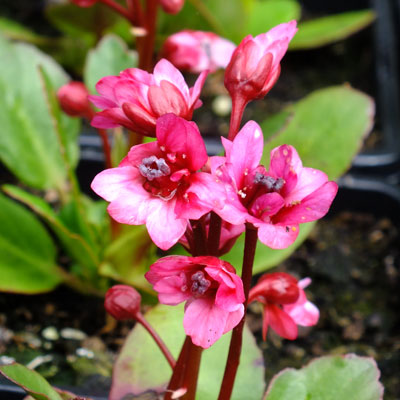

Potsize - 1L
This is a compact form of Bergenia but one that punches above its weight when it comes to flowering. Flowers are bright rosy-pink, carried on bright red stems and produced abundantly in March and April. Foliage is green for the growing season and turns deep beetroot in the Winter. 15-30cm tall. Discount of 25p per plant for quantities of 3 or overLinks
Bergenia Compared
Botanical Style Photographs
-
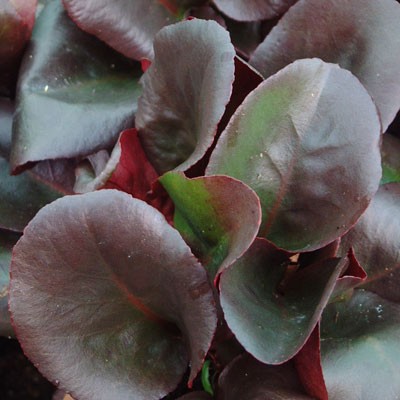
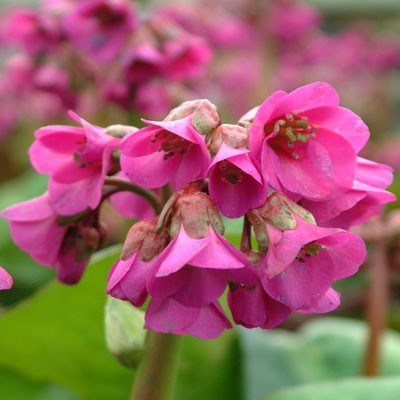
Potsize - 1L
Bergenia 'Overture' ('Eroica'). Handsome evergreen glossy green leaves are overlaid in Autumn onwards with shades of red and copper and can turn bright scarlet on exposed sun drenched leaves. One of the best for reliable winter leaf colour. The flowers are brightest magenta, produced from early to late spring. 30cm. Clumps are fairly compact in growth with flower spikes that are also relatively dense. Will even tolerate dry shade. Discount of 25p per plant for quantities of 3 or overLinks
Bergenia Compared
Botanical Style Photographs
-
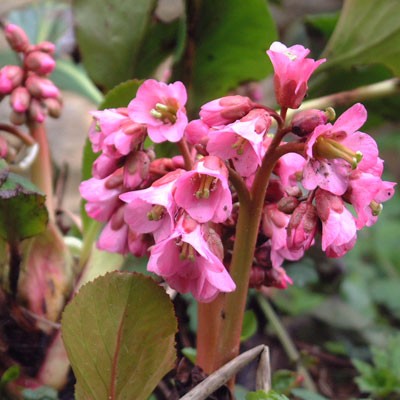
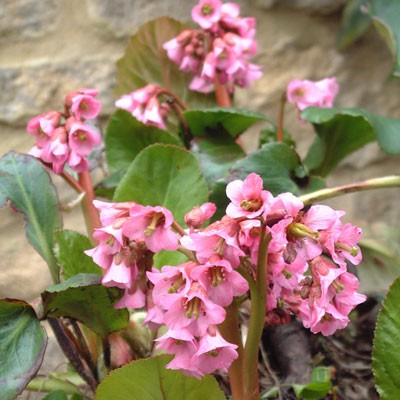
Potsize - 1L
Bergenia 'Silberlicht'. A relatively new addition to the Bergenia family having been raised in 1982 by H.Klose. It thrives in sun or shade even in quite dry conditions and produces valuable ground cover of handsome bronze tinted leaves. Its real beauty is shown when in flower late in the Spring. Flowering stems are tall and pink carrying flowers in a sugar pink hue. Discount of 25p per plant for quantities of 3 or overLinks
Bergenia Compared
Botanical Style Photographs
-
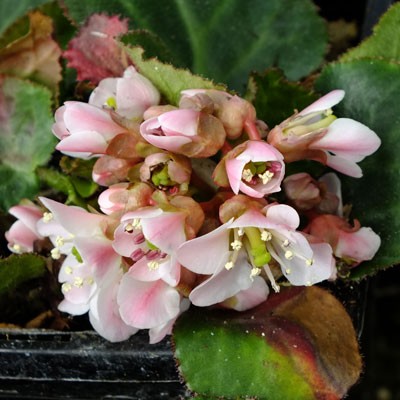
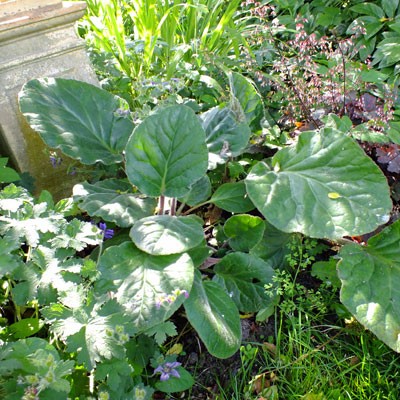
Potsize - 1L
Bergenia ciliata. The leaves of this choice species are large- up to 30cm across, well rounded and covered in tiny hairs. It makes a large clump, but considerably less dense than most bergenias. The flowers are pink, held erect and slightly fragrant. Slightly more tender than the more robust species and deserving of a spot with some shelter, especially for the flowers. Foliage will die back somewhat in winter. Leaves colour red in Autumn. Native of Afghanistan and Tibet. Prefers cool moist shade.Links
Bergenia Compared
Botanical Style Photographs
-
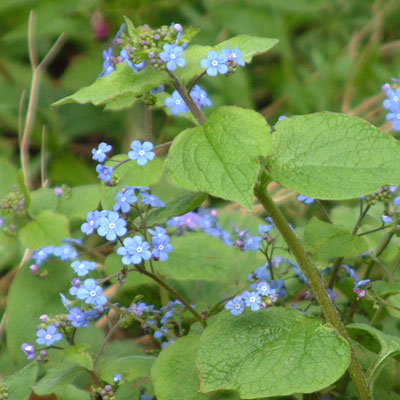
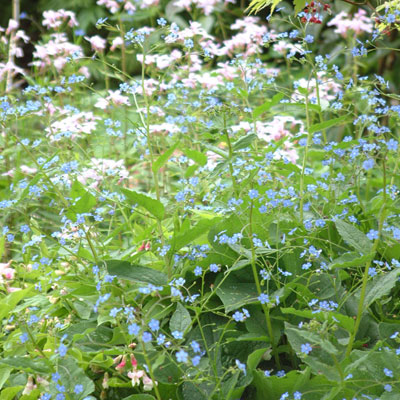
Potsize - 1L
Siberian Bugloss. A brilliant perennial which grows well in dry shady places, but will excel in most reasonable positions. Large heart-shaped felty green leaves make a stout clump topped in Spring with a cloud of tiny forget-me-not flowers. Hardy and reliable and one of those plants that ought to find a place in every garden. 30-45cmDiscount of 25p per plant for quantities of 3 or overLinks
Brunnera Compared
Botanical Style Photographs
-
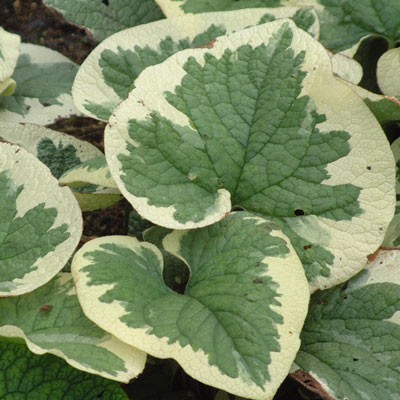
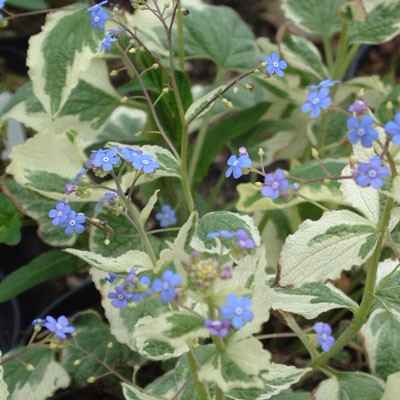
Potsize - 1L
Beautiful leaf form with large heart shaped leaves boldly bordered in white. A delicate cloud of pale blue forget-me-not flowers brings the whole plant to life in spring. Grows best in light shade and needs to be sited away from full sun where the leaves can sometimes scorch. 60cm This variety was brought to cultivation from a garden in Holland some time before 1969 by Douglas Dawson. The variegation is bolder, white rather than yellow, and the whole plant more compact than Brunnera 'Hadspen Cream'.Links
Brunnera Compared
Botanical Style Photographs
-

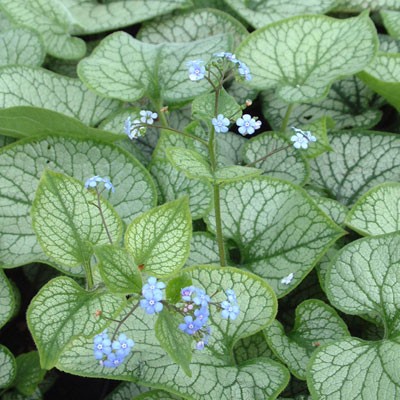

RHS AGM
Potsize - 1L
Brunnera macrophylla 'Jack Frost'. Coarsely hairy, heart-shaped leaves are heavily silvered and picked out by dark green margins and veins, making fascinating patterns not unlike an intricate cathedral window. A picture from Spring to Autumn especially when given shade and adequate moisture to prevent scorching in high Summer. The Spring display is further enhanced by an airy cloud of icy-blue forget-me-nots on stems decorated with smaller but similarly marked leaves. 50cmLinks
Brunnera Compared
Botanical Style Photographs
-
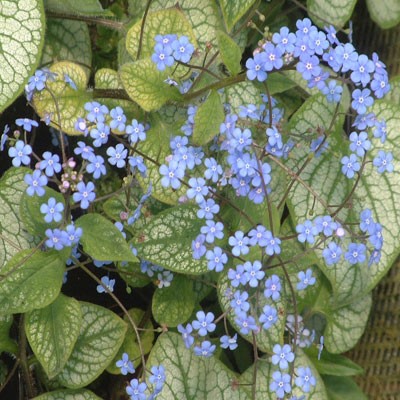
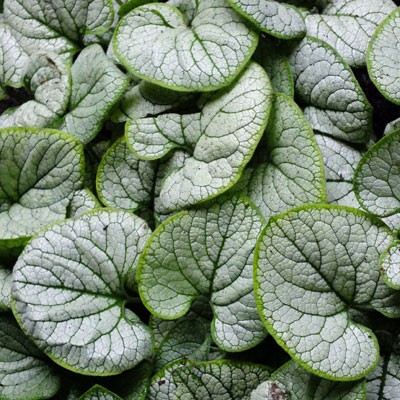
Potsize - 1L
Brunnera macrophylla 'Silver Heart'. A new introduction (2012) by Spilsbergen-Willemsen from the Netherlands. Superficially like a more silvered version of the popular Jack Frost, but generally considered to be a tougher more sun resistant variety on account of the thicker character of the leaves, which can also grow larger in size. Coarsely hairy, heart-shaped leaves are heavily silvered and picked out by dark green margins and veins, making fascinating patterns not unlike an intricate cathedral window. A picture from Spring to Autumn especially when given shade and adequate moisture to prevent scorching in high Summer. The Spring display is further enhanced by an airy cloud of icy-blue forget-me-nots on stems decorated with smaller but similarly marked leaves. 50cm plusLinks
Brunnera Compared
Botanical Style Photographs
-
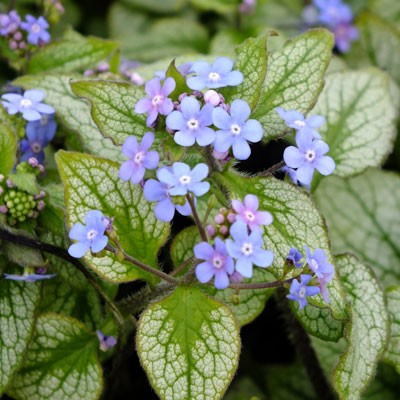
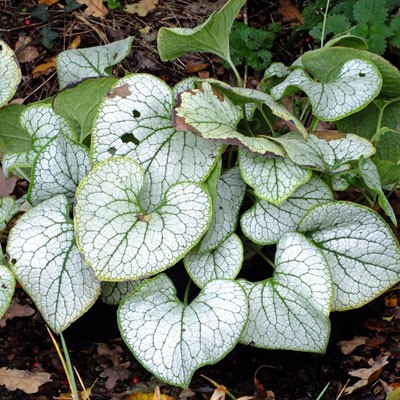
Potsize - 1L
Very similar to the ever popular Brunnera 'Jack Frost' except that it is a little whiter and has an elongated pointed tip to the leaf. Leaves are a lovely silver with the veins picked out in green forming a dense mound in any situation that is out of direct sun. Clouds of blue forget-me-not flowers in Spring.Links
Brunnera Compared
Botanical Style Photographs
-

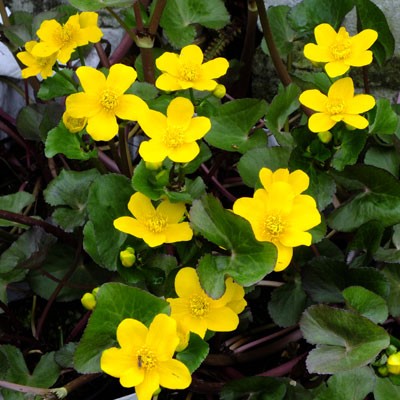

Bee Friendly
Potsize - 1L
A lovely variety with leaves that begin the year a rich bronze in colour. This colour fades as the flower stems develop so that by the time the plant is in full flower the leaves have toned down to a rich dark green with just the flower stems showing a purple flush. However the contrast of dark leaves and shining sunshine yellow flowers as they first emerge from the buds is a most beautiful thing. A variety that deserves to become well known. Marsh Marigolds are amongst the first flowers of Spring, flowering throughout the month of April.Discount of 25p per plant for quantities of 3 or over -
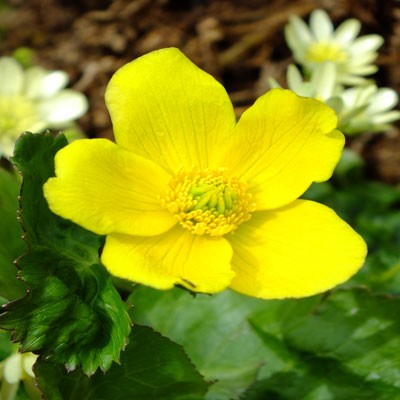
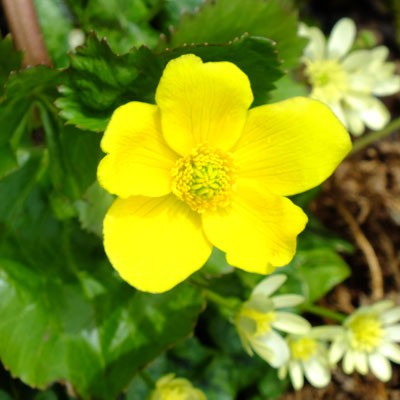

Bee Friendly
Potsize - 1L
There are two factors that set this lovely variety apart, its size and its colouring. It is larger than the species and perhaps a little more upright with leaves that are of a fresher paler green, held on pink stained petioles. The flowers, which are also large, are of a bright lemon yellow rather than the more chrome yellows of most varieties. Will root from the nodes on the flower stems. Can be planted on the pond margin or just into the water. 45cm. Marsh Marigolds are amongst the first flowers of Spring, flowering throughout the month of April. -
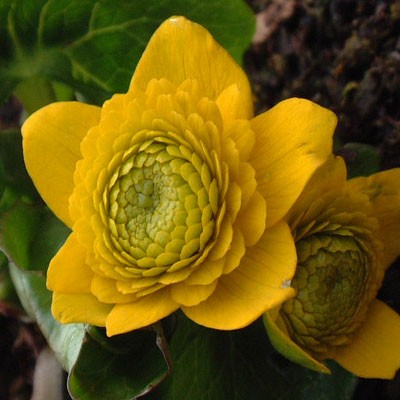
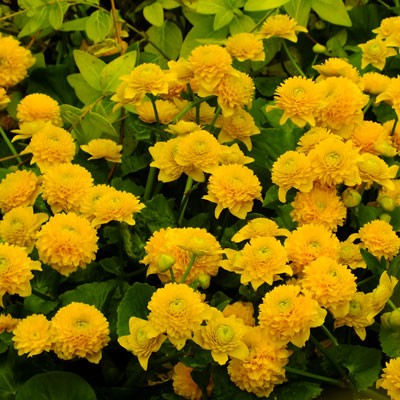

Bee Friendly
Potsize - 1L
As Marsh Marigolds go this one is relatively compact in growth, shorter in all its parts. However it is the flowers that are the chief attraction. They start off looking like a normal Marsh Marigold with the tightest anemone centre you could imagine. Then, as the flowers age, the centre petals grow out until you have a full blown miniature pom-pom dahlia of a flower in rich glowing gold. 30cm spread. Marsh Marigolds are amongst the first flowers of Spring, flowering throughout the month of April.Discount of 25p per plant for quantities of 3 or over -
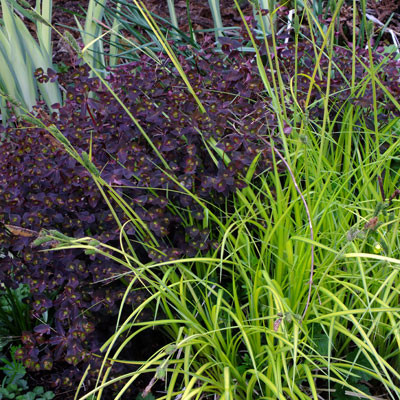

Potsize - 1L
Bowles' golden sedge. Like everything that carries Bowles' name, this is a good reliable little gem. This sedge is compact and tidy, looking good for the majority of the year, but looking at its best in late Spring. The foliage is longitudinally striped green and dominant yellow, brightest in Spring becoming deeper yellow in Summer. The flowers come early, small stiff bottle brushes held upright above the leaves. Comb out old foliage to tidy up once a year. 50-75cm. Best in a moist soil, not for dry sites.Discount of 25p per plant for quantities of 3 or over -

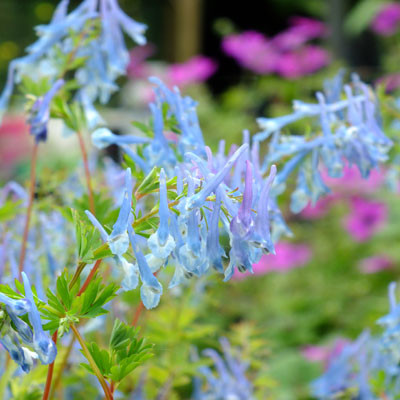
Potsize - 1L
A cross between Corydalis fleuosa and Corydalis omeniana from Ian Young's garden in Aberdeen. Vigorous clumps of limey, chartreusy-green juicy fern-like foliage over which come the strongly scented sky-blue flowers. Like Corydalis elata, but smaller and colouring only very slightly in the stems. Wintergreen and very hardy if grown in a moisture retentive soil which is not over wet and doesn't dry out in the Summer. Divide every three years to maintain vigour and encourage the best flowering. Flowers from Spring until June. 30cmLinks
Corydalis Compared
-
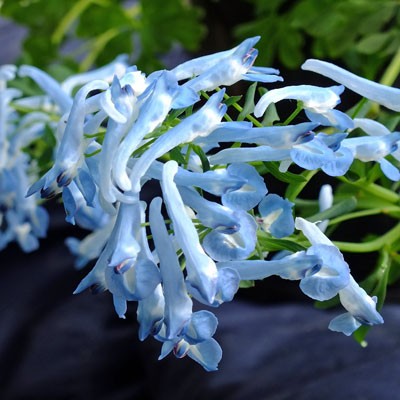

Potsize - 1L
A new repeat flowering variety with intense bright deep turquoise blue flowers that can appear from Early Summer right through until Autumn if moisture remains present. A hybrid of Corydalis flexuosa and Corydalis cashmeriana produced by Keith Lever. Short at 20-30cm. A short variety that retains the compact charm of C.cashmeriana but with a greater degree of vigour. Almost evergreen, taking on good colour in the flower stems with adequate moisture throughout the season.Links
Corydalis Compared
-
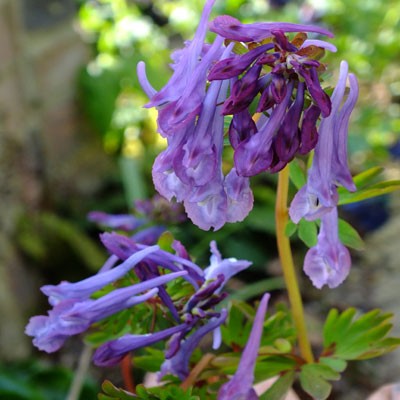

Potsize - 1L
Corydalis 'Spinners'. Distinguished by having flowers that age purple form a blue start earlier in the year. The flowering stems are pretty well upright and carry a distinctive red flush. The foliage mounds up into a ferny bush of fresh appley-green leaves which have a dusky cast in the winter from tiny brown spots. Early Spring. 30*30cm. For moisture retentive soil in shade or half shade. Possibly more evergreen than some.Links
Corydalis Compared
-

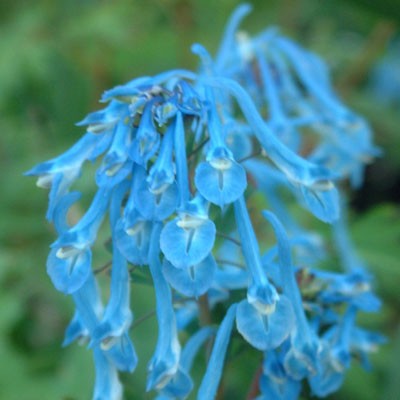
Potsize - 1L
Corydalis 'Tory MP'. This certainly has some Corydalis elata blood in it. The habit is fairly upright with the flowers being held high on tall stems and can come a month later than varieties such as Corydalis flexuosa 'Pere David'. They are a rich blue in colour. I did wonder if this earned its name on account of it being true blue and upstanding, then I read that it came from being true blue and going on and on! - but then again perhaps it owes something to its habit of disappearing from sight over the Summer ! - I'll leave you to draw your own conclusions. Early Spring. 45*30cm. For moisture retentive soil in shade or half shade.Links
Corydalis Compared
-

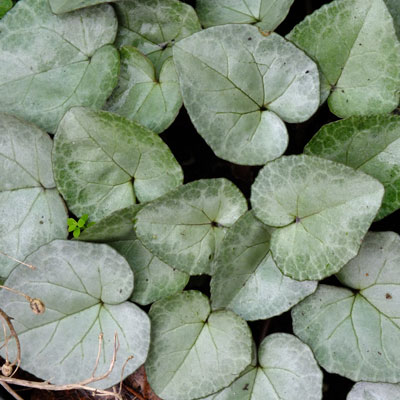
Potsize - 1Litre
This lovely group covers forms with a fully silvered leaf. Just as easy as the more commonly encountered green leaf varieties just with more striking foliage. Flowers are pale pink with a darker eye, occasionally white. Excellent to grow in a shady dry spot where the foliage makes excellent ground cover.Links
Botanical Style Photographs
-

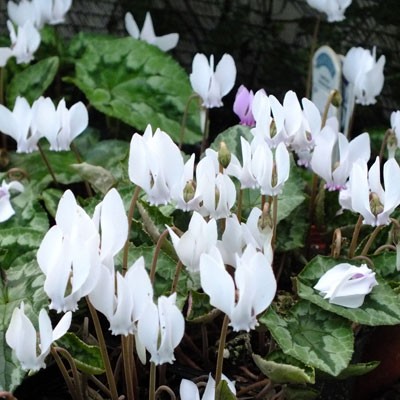
Potsize - 3.5 inch round
These are plants we have selected out from the main batch which we know are pure white. Cyclamen hederifolium heralds the onset of Autumn when its charming pink or white reflexed flowers push their way above ground in late August. Cyclamen hederifolium is the easiest species to grow as it will withstand extreme cold and frozen conditions but also high summer temperatures when it is protected by its dormancy. They thrive in poor soil, make good companions to bulbs and will thrive anywhere that offers quick drainage and reasonable light (not overshadowed) when in leaf through Winter. The leaves make wonderful ground cover in many situations but especially in difficult dry areas under trees. They have wonderful marbled patterns and form close knit mats of thick textured ivy-shaped leaves, often with lovely purply reverses. The leaves arrive shortly after the flowers (in September) and persist through the dullest months until Summer heat drives them into dormancy. Discount of 25p for 3-9 plants, 30p for 10 or more Our plants are grown from seed collected from a variety of plants in the garden, (they are not collected from the wild), and are therefore contain a mixture of leaf patterns.Links
Botanical Style Photographs
-
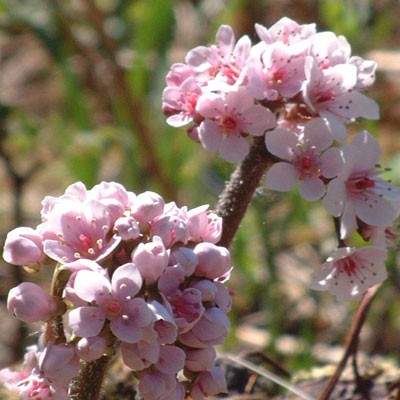
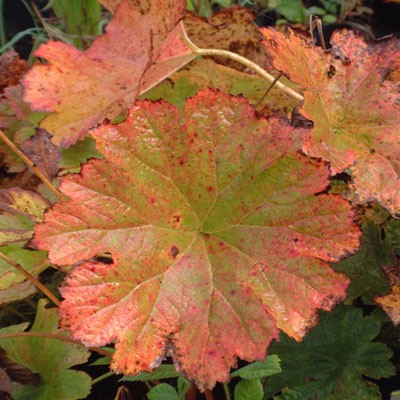
Potsize - 1L
Darmera peltatum (Peltiphyllum peltatum). All through the summer months, the fresh green, broad circular leaves make a bold dense clump before turning lovely scarlet in Autumn. The spring sees large round heads of pink stained flowers rise 3ft high like drumsticks sprouting from the soil. For moist to boggy soil. 125cm tall spreading. Very often planted by the side of a pond, but also suitable for growing in shade, even in light woodland provided there is moisture to be found at the root. The leaves sprout from a network of thick rhizomes that creep over the top of the soil in a dense mat. Discount of 25p per plant for quantities of 3 or over -



RHS AGM
Potsize - 1L
The beautiful Bleeding Heart or Lady-in-the-Bath. Fresh green ferny foliage above which arch stems dripping pink & white flowers like dewdrops. A picture of poise and grace. 3ft in a nice moist soil. The fleshy roots are delving and brittle so its best not disturbed and best sited in a sheltered situation in sun or partial shade with plenty of humus. In hot situations where water might go short at the roots, the plant will take a period of Summer dormancy but will re-emerge the following Spring. Mulching helps to extend the flowering season. Great cut flower and surprisingly scented. Deer and Rabbit resistant, possibly on account of its yellow sap. You know a plant has been loved for years when it has numerous names. For this one try Bleeding Hearts or Ladies-in-the-Bath, Ladies-in-a-boat or Dutchman's Breeches or even Lady's Locket and Lyre Flower. The ladies-in-the-bath/boat reference is only apparent if you take an open flower, turn it upside down and pull the outer petals apart, then it becomes obvious. Discount of 25p per plant for quantities of 3 or overLinks
Botanical Style Photographs
-


Potsize - 1L
A very special relative of Solomon's Seal, selected by Dan Hinckley from his travels in China and notable for its luscious deep burgundy young foliage, black stems and exotic greeny cream bells with dangling exerted stamens. Exotic looking, bamboo-like stems are clothed with glossy lanceolate leaves, purple red at first, becoming dark green. In late Spring these terminate at about 90cm in very open clusters of greeny cream bell shaped flowers followed by purple black berries. Slowly spreading by rhizomes in good, humus rich soil in part shade, ideally with morning sun for robust self-supporting growth. Almost evergreen in mild climates or a sheltered spot it is deciduous where temperature fall lower. Night Heron is best as a dramatic vertical accent for choice woodland plantings where its graceful vertical stems lend a new dimension to plantings of ferns, Hostas and Epimediums.Links
Botanical Style Photographs

















































